Junior - OpenStar's Fusion Magnet
Ahead of our team's attendance at ASC, read up on what makes our fusion magnet so unique.
From September 1-6, members of the OpenStar team will head to Salt Lake City Utah, to present at the Applied Superconductivity Conference (ASC).
Junior - OpenStars Fusion Magnet
OpenStar Technologies
OpenStar Technologies is building a Levitated Dipole Reactor (LDR), uniquely integrating novel power supplies and leveraging High-Temperature Superconductors (HTS) onboard a levitating electromagnet. This half-tonne device, affectionately named Junior, houses a complex arrangement of systems unlike anything else in the world.
For more traditional fusion machines, a plasma is confined inside a fixed configuration of superconductors. For the levitated dipole, the superconductors are contained within a donut-shaped magnet with field lines emanating outwards, confining a plasma around the magnet in a dipole shape. We can observe this same shape in nature with Earth’s magnetosphere.
Though our founding in 2021 came from modern innovations here in New Zealand, it would not have been possible without the foundations laid by institutions such as MIT, Columbia University, and Tokyo University. MIT, alongside Columbia, began their Levitated Dipole Experiment, or LDX, in 1998 and officially ceased research in 2014. Over this time, they studied the quirks and benefits of Low-Temperature Superconductors for Dipole application and successfully confined a plasma. The University of Tokyo began experiments on RT-1, another levitated dipole device using HTS, in the early 2000s and they continue to extract findings from its operation today.
As opposed to Low-Temperature Superconductors which operate close to absolute zero, High-Temperature Superconductors are more forgiving for fusion devices. Their ability to operate at liquid nitrogen levels (77K) makes a wealth of operations more accessible. HTS can carry more current or higher critical current densities; this is a key factor in driving better performance for plasma confinement. The higher thermal tolerance also increases power recirculation efficiency, as less energy is required to keep the coils cool.
As the world invests heavily in conventional fusion devices, OpenStar is proving the viability of an alternative machine with our key enabling technologies. The fusion industry is united with the common goal of commercialising the process that powers the stars, and Junior is a stepping stone in achieving that with dipole devices. Our current milestone includes confining a plasma with a magnet charged by a flux pump. So far we have designed, built and tested such a magnet in less than 2 years, a feat in and of itself.
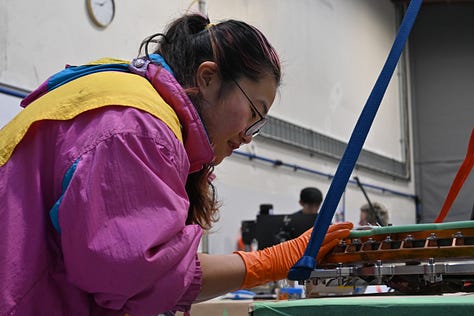
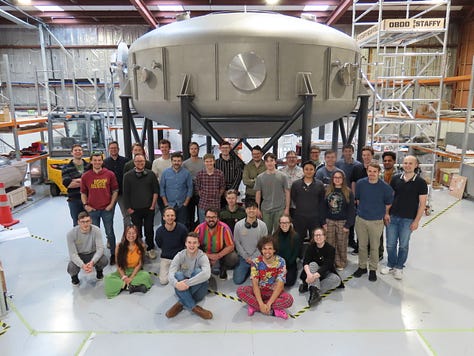
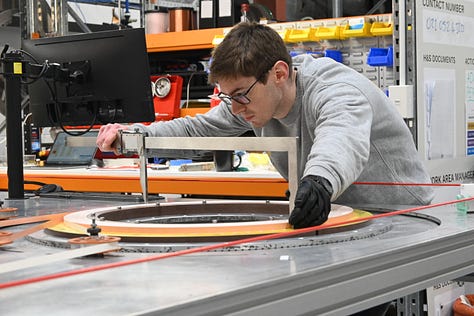
Coils
The magnet itself comprises 14 non-insulated coils utilising ReBCO superconductor. Each coil is wound with up to 100 turns, alternating layers of HTS tape and solder paste. The coil is then placed into a temperature-controlled oven to evenly distribute the solder. For quality assurance, they are tested in liquid nitrogen (77 K). The use of FEM (Finite Element Modelling) is used for final validation.
The coils operate at 1440 A within a temperature range of 30 - 50 K and can reach a peak value of 5.6 T, storing 0.5 MJ of energy. This field strength is not enough for power plant-level fusion, however, this is not the purpose of Junior. This device is designed to test the integration of HTS power supplies in a levitated dipole magnet.

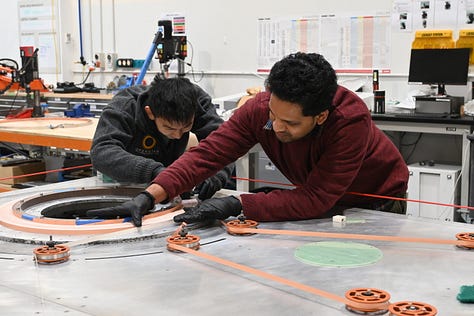

Subsystems
As Junior levitates, it does so while completely disconnected from any external power supplies. This is in part because the confined plasma will be upwards of 100 million degrees Celsius, a temperature that no physical material can withstand. More crucially though, particles must move at great speeds and extreme temperatures for fusion to occur and should the magnetic field lines have mechanical elements obstructing their path, the plasma would never reach its critical temperature.
Levitating the magnet is relatively easy. Junior is initially hoisted into position with mechanical support, then held in its floating position by a second, smaller magnet atop the chamber. The challenges arise in integrating the power supply, electronics, and communication equipment on board the floating magnet in a cavity that is not penetrated by the magnetic fields. Additionally, all subsystems equipment must maintain their room temperature operating state, a far cry from the cryogenic coils and scalding plasma.
To identify the optimal arrangement of the coils and subsystems, a type of genetic algorithm known as differential evolution was deployed. Junior now boasts a near-zero field region in the magnet cavity where the onboard power supplies live.
A key component of this assembly is the power supply that is responsible for charging the magnet. Such energy demand would usually warrant a large, heavy power source that cannot sit onboard a levitating magnet. The development of novel HTS power supplies for dipole application sets OpenStar apart from our fusion competitors.
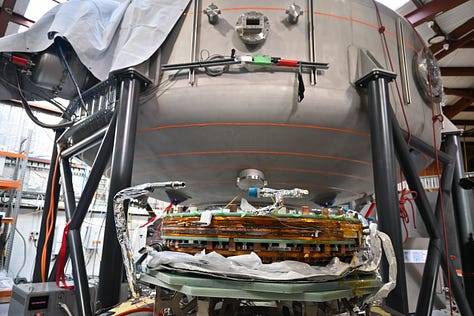

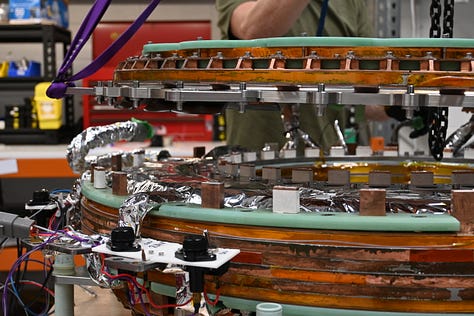
Structure
Designed to withstand 74 tonnes of compressive force, the structure of Junior resists stresses that would otherwise cause self-implosion. Approximately half of the ReBCO conductor is used in the inner coils which form the mid-coil pack. The remaining coils sit at the top and bottom of the magnet. Crucially, the structure must also protect the zero field region which houses the onboard power supplies.
To reach cryogenic operating temperatures for the magnet, we use conduction cooling with a helium gas loop. As the power supplies on board only offer a finite amount of power, the magnet must be redocked and recharged intermittently, the cold loop comes into play during this time to maintain cryogenic temperatures.
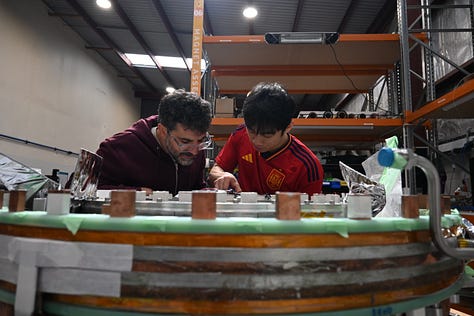
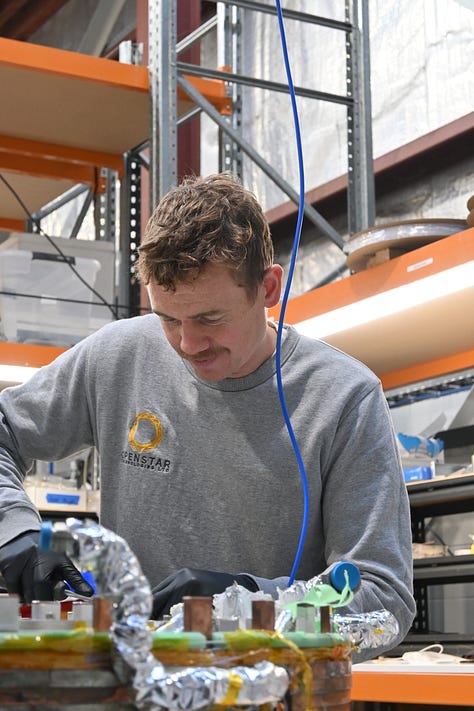
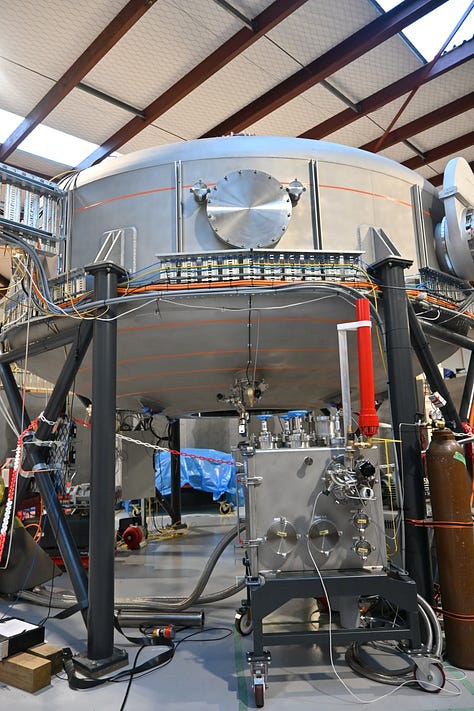
Conclusion
This trip to Salt Lake City will allow us to share the process of developing Junior and the subsequent findings from various experimental campaigns amongst some of the brightest minds in the superconducting industry. Attendees will hear from a handful of OpenStar crew who have been a part of the development process from design to test. We encourage you to introduce yourself should you be in attendance and stay tuned as further developments unfold.



